.jpg)
A Fonte Canale Vertical with Cristiana Tiberio
When I think back on my journey to understanding the regional wines and foods of Italy, it was the region of Abruzzo that piqued my interest the most. While I had always placed Piedmont and Tuscany on a pedestal for their wine, in Abruzzo, the diversity of cuisine always excited me, and the wine (in theory) excited me as well.
This is a region that spent much of its time separated from most of its neighbors, keeping the regional preparations from village to village intact. Imagine, if you  will, rugged mountain foods, including lamb ragus and lamb skewers “arrosticini” with bitter greens. Yet, as you move toward the coast and into the hills, suddenly a diverse array of air-dried pastas fills your plate, each one seeming to take its flavors from the salty winds of the Adriatic Sea. Here, they like their heat too, as you’ll often see chile-infused olive oils or chopped chiles being tossed onto pasta. Finally, when you make it to the seaside towns, all of these flavors come together with an assortment of fresh fish, seafood pastas, farro and stews. It’s an amazing region to eat through–but what about the wine? will, rugged mountain foods, including lamb ragus and lamb skewers “arrosticini” with bitter greens. Yet, as you move toward the coast and into the hills, suddenly a diverse array of air-dried pastas fills your plate, each one seeming to take its flavors from the salty winds of the Adriatic Sea. Here, they like their heat too, as you’ll often see chile-infused olive oils or chopped chiles being tossed onto pasta. Finally, when you make it to the seaside towns, all of these flavors come together with an assortment of fresh fish, seafood pastas, farro and stews. It’s an amazing region to eat through–but what about the wine?
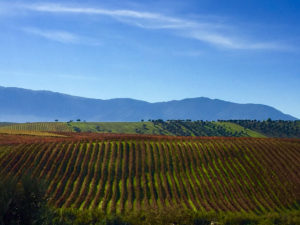 The problem I had for the longest time with Abruzzo wine was the disparity between the simply made “entry-level” wines and those of the top producers. I recall many evenings sipping a $15 Montepulciano d’Abruzzo and being perfectly satisfied. As well as other occasions, where I would be lucky to be tasting Valentini Trebbiano or Emido Pepe Pecorino–again, satisfied, but at a much higher price point. The problem was, what was in the middle? Each time I tried to find a more important expression of these varieties, without breaking the bank, I would find an oak-influenced, overripe Montepulciano or simple and flat Pecorino. The problem I had for the longest time with Abruzzo wine was the disparity between the simply made “entry-level” wines and those of the top producers. I recall many evenings sipping a $15 Montepulciano d’Abruzzo and being perfectly satisfied. As well as other occasions, where I would be lucky to be tasting Valentini Trebbiano or Emido Pepe Pecorino–again, satisfied, but at a much higher price point. The problem was, what was in the middle? Each time I tried to find a more important expression of these varieties, without breaking the bank, I would find an oak-influenced, overripe Montepulciano or simple and flat Pecorino.
I spent years looking for that up-and-coming or under-the-radar producer that cared about varietal character, terroir and making honest wine. And then, one day, I found her.
Do you know Cristiana Tiberio?
If not, then it’s time to change that. Cristiana is in the now, yet connected to the earth, driven by passion, firmly respecting all that came before her, socially active 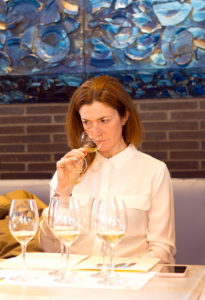 around the world, and has a serious soft spot for Abruzzese Sheepdog. Together with her family, they reintroduced the world to what’s possible in Abruzzo with Montepulciano, Pecorino, Cerasuolo and the focus of today’s blog, Trebbiano Abruzzese. around the world, and has a serious soft spot for Abruzzese Sheepdog. Together with her family, they reintroduced the world to what’s possible in Abruzzo with Montepulciano, Pecorino, Cerasuolo and the focus of today’s blog, Trebbiano Abruzzese.
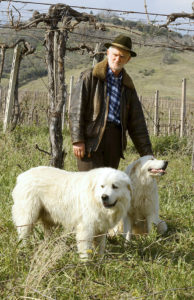 It all started with Cristiana’s father in the late nineties. It was at this time that Riccardo Tiberio found himself moving his entire family from the coastal city of Pescara to the small town of Cugnoli because of a vineyard he had found of old, “True” Trebbiano Abruzzese, which Cristiana urged him to purchase. It all started with Cristiana’s father in the late nineties. It was at this time that Riccardo Tiberio found himself moving his entire family from the coastal city of Pescara to the small town of Cugnoli because of a vineyard he had found of old, “True” Trebbiano Abruzzese, which Cristiana urged him to purchase.
It’s important to understand that there’s a reason why Trebbiano isn’t looked upon as a wine of great importance around the world, and that’s because very few producers are actually growing real Trebbiano vines. However, we can’t necessarily blame them; the reality is that even the vine nurseries of the region were unintentionally supplying a mix of inferior clones and less important varieties over decades. Yet when we taste the great Trebbiano of Valentini, we are tasting true Trebbiano Abruzzese–no wonder we love it so much. It was with this same love of the grape and knowledge of its possibilities that the Tiberio family invested in resurrecting their “new” old-vine vineyard.
Of course, it wasn’t easy, since these vines had not been tended to for quite some time. Together with her brother Antonio, Cristiana worked to return the vines to health, with their first harvest of true Trebbiano taking place in 2004. Keep in mind that this was not Fonte Canale at the time, but the beginning of Cristiana’s quest to produce a high-elevation Trebbiano unlike most others you could find. It wasn’t until 2007 that the parcel that would go on to produce Fonte Canale began to bear healthy fruit. It was at this time that Cristiana 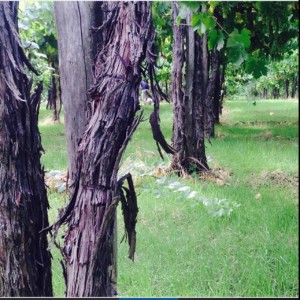 began her experimentation in both the vineyard and the cellar, working to show the identity of the vines and the vineyard. Neither organic nor biodynamic can really describe her approach, yet you won’t find any chemicals in her regimen, choosing to dry farm the vines, forcing them to dig their roots deep into sandy, limestone-strewn soils in search of water-retaining clay. It’s in this struggle that the fruit produced here could rise to the level necessary for Cristiana’s vision. began her experimentation in both the vineyard and the cellar, working to show the identity of the vines and the vineyard. Neither organic nor biodynamic can really describe her approach, yet you won’t find any chemicals in her regimen, choosing to dry farm the vines, forcing them to dig their roots deep into sandy, limestone-strewn soils in search of water-retaining clay. It’s in this struggle that the fruit produced here could rise to the level necessary for Cristiana’s vision.
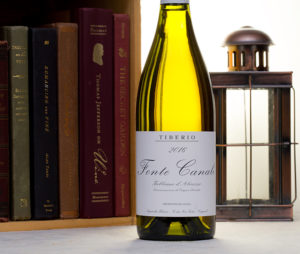 In 2012, her goal was achieved with the first release of Fonte Canale Trebbiano Abruzzese. It’s a true Trebbiano Abruzzese, made from the same vineyard that inspired her father almost twenty years ago. It’s produced from 80-year-old vines, grown using traditional pergola vine training, which allows her Trebbiano to enjoy a long, shady growing season. Cristiana describes the wine as liquid minerals, and from the moment you taste it, her description becomes clear. The textural depth and layered minerality found here is unimaginable, and it must be tasted to be believed. For those who have the means, put this next to a Valentini Trebbiano to taste, and you’ll see what I mean. It is, without a doubt, one of Italy’s most important white wines today, with the ability to age beautifully in the cellar. However, if you ask Cristiana, she’ll tell you that her work is not yet done. In 2012, her goal was achieved with the first release of Fonte Canale Trebbiano Abruzzese. It’s a true Trebbiano Abruzzese, made from the same vineyard that inspired her father almost twenty years ago. It’s produced from 80-year-old vines, grown using traditional pergola vine training, which allows her Trebbiano to enjoy a long, shady growing season. Cristiana describes the wine as liquid minerals, and from the moment you taste it, her description becomes clear. The textural depth and layered minerality found here is unimaginable, and it must be tasted to be believed. For those who have the means, put this next to a Valentini Trebbiano to taste, and you’ll see what I mean. It is, without a doubt, one of Italy’s most important white wines today, with the ability to age beautifully in the cellar. However, if you ask Cristiana, she’ll tell you that her work is not yet done.
The question on the minds of most Tiberio fans has always been, just how well and how long can Fonte Canale age? To try and answer this question, as well as 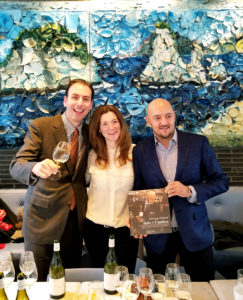 put some collector’s fears to rest, Cristiana, along with Levi Dalton (I’ll Drink To That) and Giuseppe Palmieri (Osteria Francescana) organized a vertical tasting of nearly every vintage of Fonte Canale that has ever been created. Granted, it is still a very new wine in the grand scheme of things, with the 2012 vintage being the first wine (or should I say the last wine) to be tasted on this day. put some collector’s fears to rest, Cristiana, along with Levi Dalton (I’ll Drink To That) and Giuseppe Palmieri (Osteria Francescana) organized a vertical tasting of nearly every vintage of Fonte Canale that has ever been created. Granted, it is still a very new wine in the grand scheme of things, with the 2012 vintage being the first wine (or should I say the last wine) to be tasted on this day. |